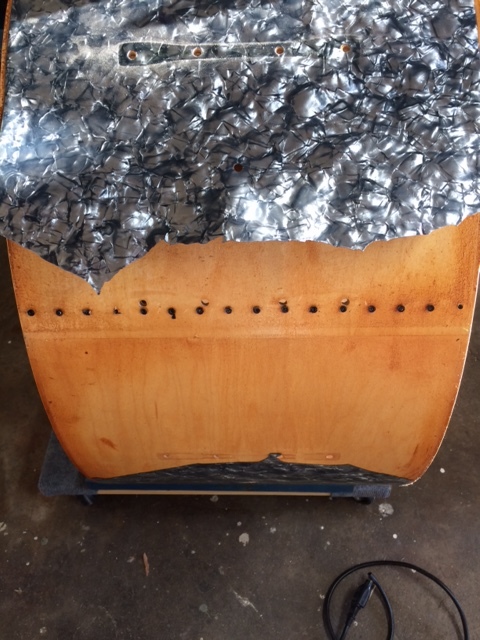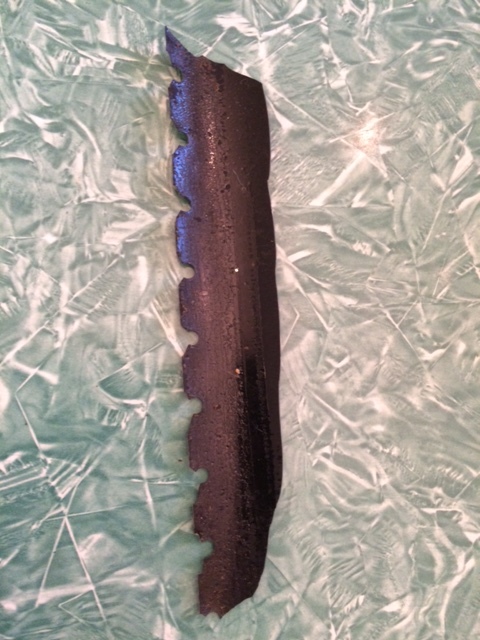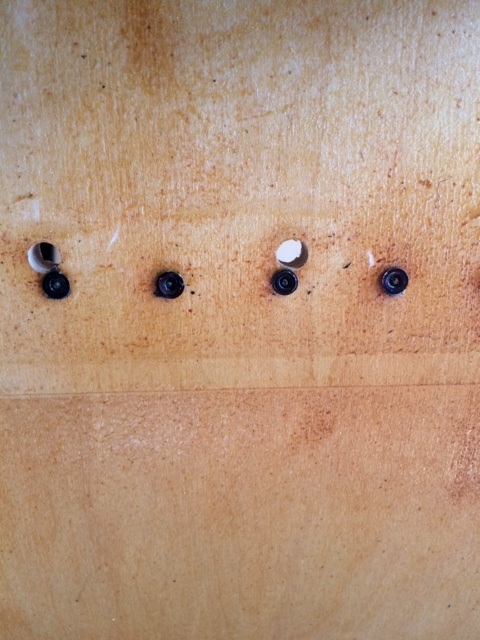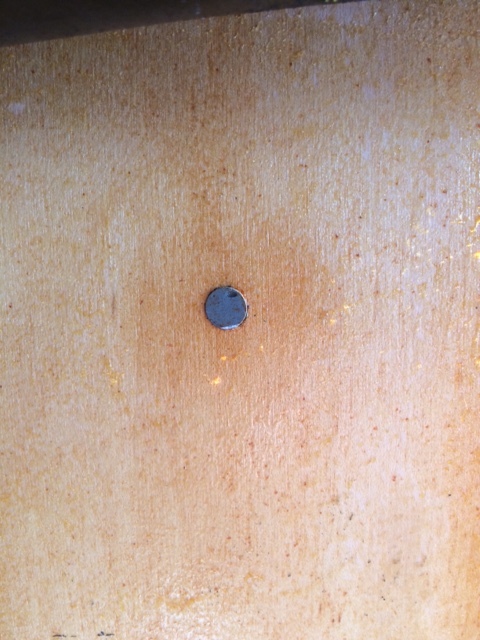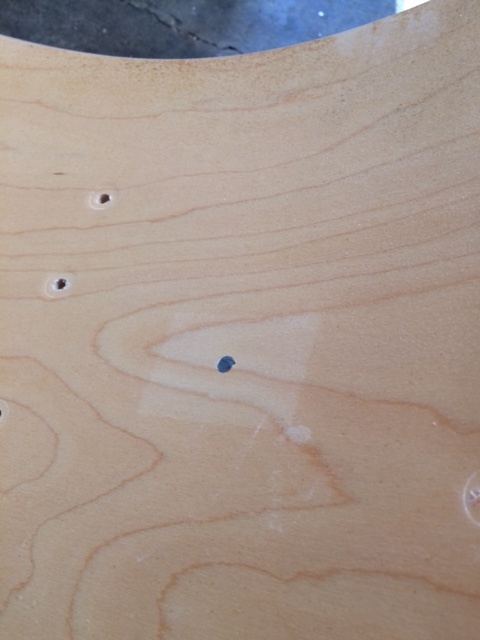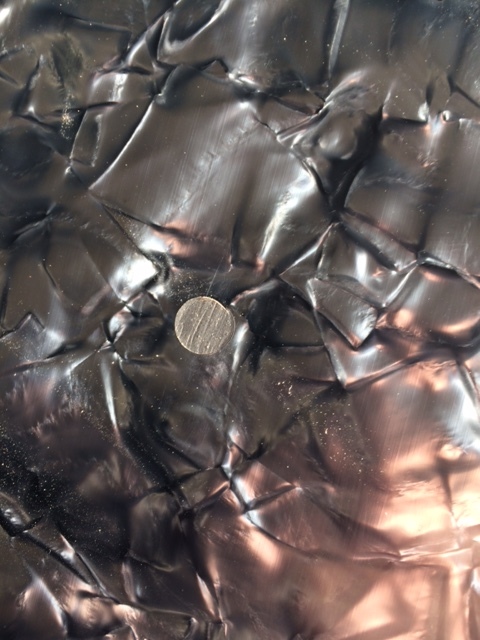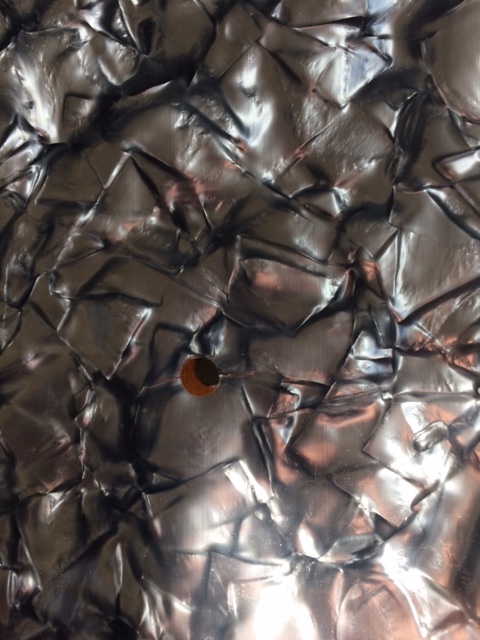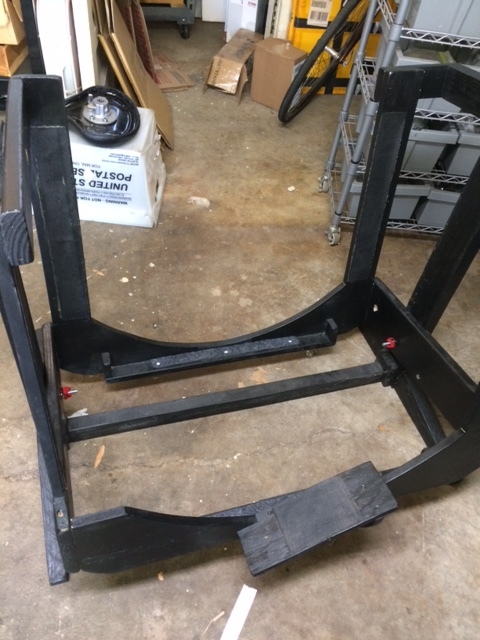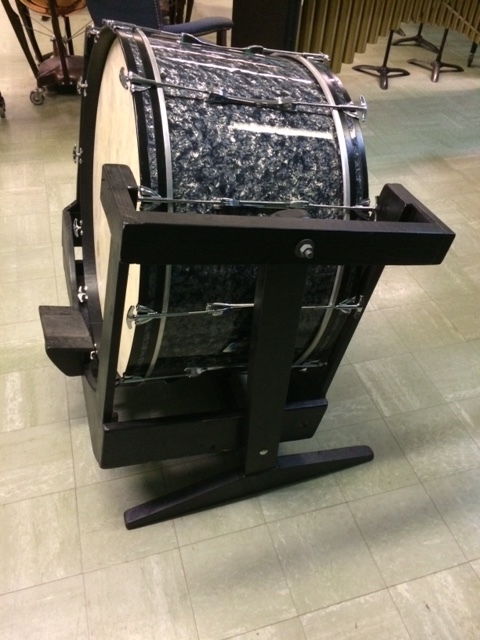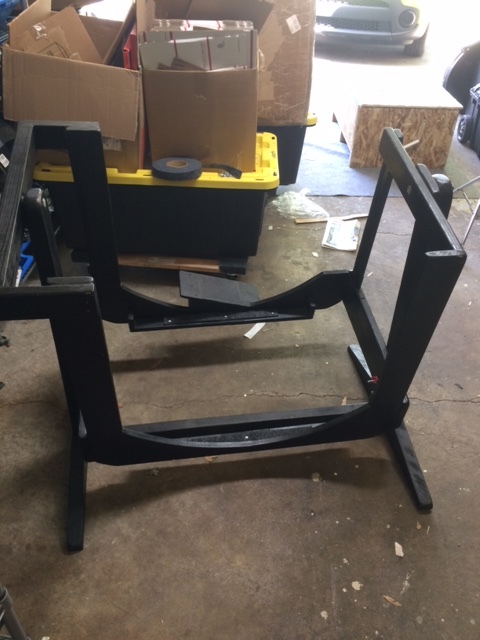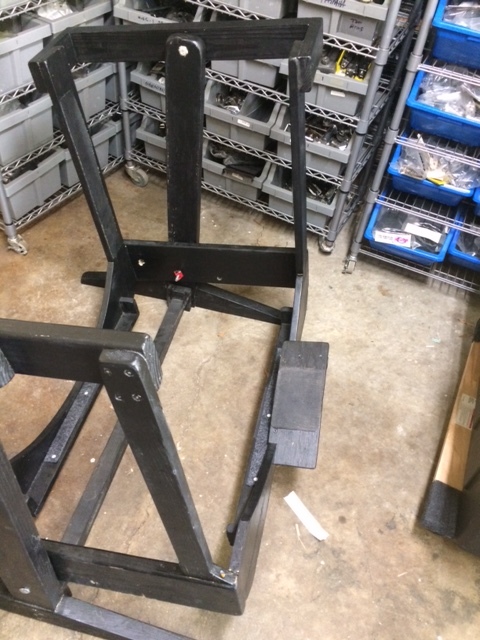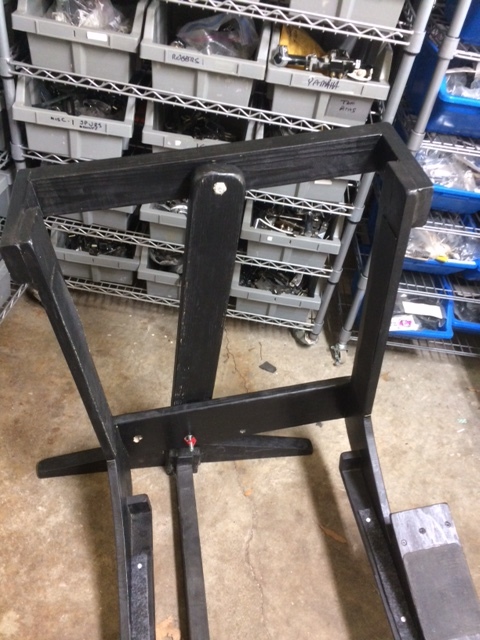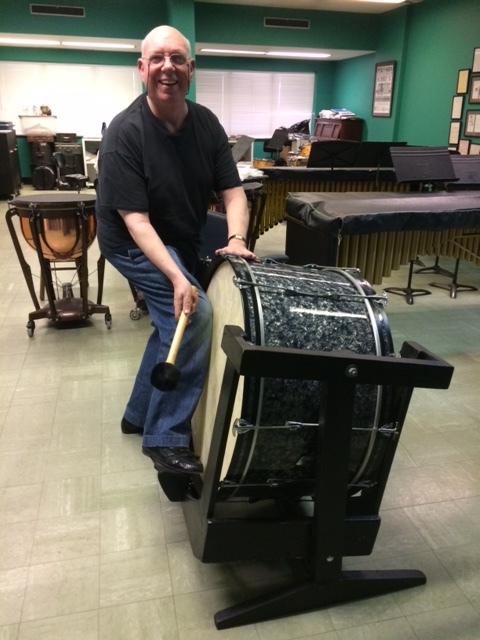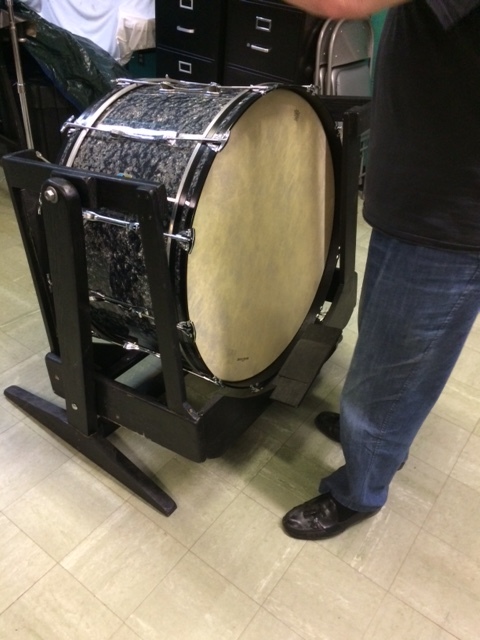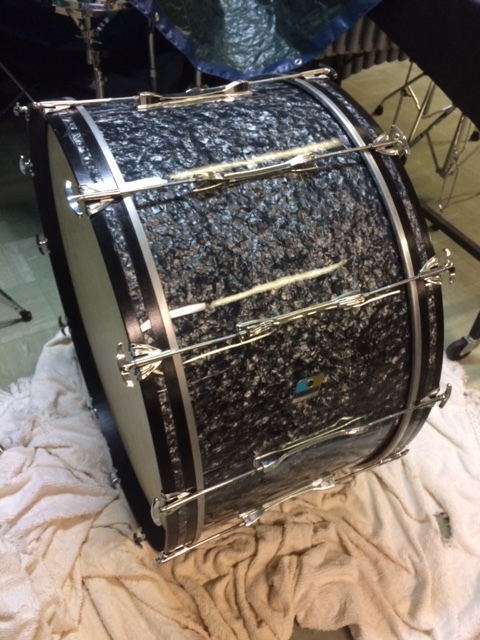This is a repair job I did this year for Stan Head, well known veteran Memphis percussionist and teacher. The Ludwig concert bass drum is from the eighties and the stand is one Stan had custom made for this drum. The problem with the drum was that the ends of the black diamond pearl wrap had shrunk and was coming loose. The wrap was also beginning to bubble. The stand had come apart at one joint and the tilting mechanism needed modification.
The wrap shrinkage problem is a fairly well known 80s failure that resulted from the Ludwig plant in Chicago being prohibited from using their glue to secure the wrap. In Rob Cook’s The Ludwig Book, Jim Catalano of Ludwig is quoted as saying, “Product quality began to decline for a variety of reasons. The knowledge drain was a primary reason; we no longer had key craftsmen. We had a very old factory on Damen Avenue and were not outsourcing product from offshore. Everything was made in Chicago where we had all sorts of problems. OSHA, for example, said we couldn’t use our glue to glue the plastic on the shell. You could in Niles where Slingerland was, but in Chicago city limits you couldn’t because that blue if burned could give off a a fume that could make you sick. Because of that particular ruling, Ludwig had to go to “anchor locks” as Mr. Ludwig used to call them. We called them rivets. They were a disaster for the company because our drums didn’t look good any more.”
The dealers and customers called them rivets too. I was a dealer for Ludwig at my George’s Drum Shop in the eighties and saw my share of these riveted drums. I was just lucky that none of those riveted drums I sold ever came back on me. I was selling mostly low end Rocker kits and they probably did not get exposed to much heat and cold, sunlight or stage lights in amateur drummers’ bedrooms and garages. I remember, in particular, seeing Allen Gratzer play with REO Speedwagon at the Jackson Mississippi coliseum. His red Ludwig drums were completely bubbled all over from the hot stage lights. It was obvious that the wrap had not been glued. Thin plastic like that will expand in the heat and shrink in the cold. Most pearl wraps will shrink over time even if glued correctly.
I have recovered hundreds of drums that bubbled or shrank because the wrap was not glued, but taped. This is why I preached to people, until I am blue in the face, to use the right glue all over the wrap and shell, not just double sided tape at the ends of the wrap. This is what “Jammin’ Sam Barnard” hawks at his wrap site. I call him out and unabashedly warn people about buying his pre-cut wrap with the double sided tape on the ends. He claims that the lugs hold the wrap in place, which is not true. I don’t know whether he is ignorant or lying. I have repaired many drums with his taped wrap on them.
So Ludwig was using small black cup rivets that were sunk into holes in the shell that did not go all the way through the shell. This was to try to hold the wrap in place and keep it from moving. But when I looked inside this bass drum there was another anomaly. There were four dots that looked like pegs along the wrap’s end lines and also unusual single dots in the middle of the shell between the lug holes. These small wooden pegs were inserted into holes that DID go all the way through the shell and through corresponding holes in the wrap. They were painted dark gray to match the color of the wrap. I had to look carefully to find them from the outside. I believe this was an separate attempt at a method to keep the wrap in place. Maybe it was the first thing they tried that didn’t work, then they added the rivets. Who knows?
After pulling the ends of the wrap out from underneath the rivets and pegs, I pulled the small rivets out with a pair of pliers. They came out pretty easily. Then I pulled the wrap off the drum. There was some glue but I could tell it wasn’t the right kind of glue because it came off so easily. I usually have to use a heat gun and a scraper to get properly glued wrap off a shell. I didn’t fill the rivet holes since they were going to be covered over with the new wrap. I shaved the pegs off with a razor blade to make them flush with the shell. I then put new wrap on the drums with the DrumWrapper machine which I manufacture.
The stand was broken at the corner joint where the foot rest is. I glued and screwed that and reinforced it with a steel angle bracket. I also put felt on the stand where the bass drum hoops would touch. The bolts that held the cradle in place were long and had hex nuts on them. They took a while to unscrew and pull out to change the position of the cradle. I replace those bolts with shorter ones and put Pinch Clips in place of the nuts. The Pinch Clips are a very simple cymbal top device to replace the wing nut; pinch it and pull it off. They worked on these bolts too.
Stan was pleased with the job and there is a picture of his smiling face with his “new” drum. It doesn’t take much to please us drummers, does it? A little chrome, a little color, a little something new…..

